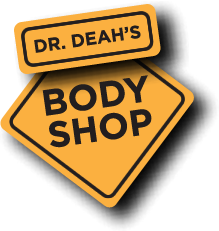by Dr. Deah Schwartz
 Therapeutic Tidbit of the Month
Therapeutic Tidbit of the Month
“April is the cruelest month,” wrote the poet T.S. Eliot, in his poem, The Wasteland. “breeding lilacs out of the deadland. Mixing memory and desire. Stirring dull roots with spring rain.” April is also National Poetry Month and for those who think that Poets do not have a sense of humor, do you think it was an accident that members of the National Poet’s Society have been known to distribute free copies of Eliot’s The Wasteland to Post Offices around the country on Tax Day…a Cruel Day for many…smack dab in the middle of April??
April is also National Humor Month and National Stress Awareness Month and starts off with April Fool’s Day on the first and ending with National Honesty Day on the 30th! Something about the symmetry of that amuses me.
For the most observant people of the Jewish faith, Seders are winding up as the last night of Passover is on April 2nd. Seders are challenging for people with eating disorders and body image issues, like most holidays the emphasis is frequently on the food and how much everyone loves the food, how much food every one eats, and how everyone looks in their holiday outfits. I’ve written about this in past Schmooze-letters and Blogs which can be found on my website complete with suggestions and personal reflections on managing the age old question, “Why is this night different from all other nights?”
But let’s examine another therapeutic challenge that arises in April for some folks struggling with Eating Disorders and Body Dissatisfaction; Spring Break.
- For many students April brings spring break which may mean less structure regarding work, school, and leisure activities.
- Extra free time may lead to a resurgence of unconscious eating or an increase in eating as a social activity.
- This in turn may spur some feelings of being out of control and may trigger self-destructive behaviors to manage the feelings.
- For families who rely on school meals as primary nourishment for their children, being at home may bring about a scarcity of food or a more limited choice of healthy food options.
- The pressure on college students to overindulge in alcohol, food, and reckless abandon as dictated by the flood of movies that appear every year at this time is enormous.
- The distant drums of summer and the need to lose the winter weight in order to look good in a bathing suit are moving closer and starting to beat louder, and anxiety increases as the days in April pass by.
Some Things to Consider:
Remember when working with your clients, or helping your children or yourself deal with the challenges of April, that it is important to focus on what is going on inside. Check in with feelings that arise with free time, or pressure to over consume. Reinforce the importance of internal qualities and deemphasize the importance of the scale and the mirror. Continue to explore enjoyable opportunities for physical activity for fun, not for weight loss, and to improve a sense of body competency. These interventions may not help you with your taxes but they certainly will help proactively manage a relapse or intensification of disordered eating and self-hate.
We don’t want things to get any verse! (Oy did I really say that??!!).
Therapeutic Expressive Arts Activity of the Month

Title: Pillow Talk
Objective: To reinforce the concept that focusing on who we are on the inside carries more “weight” than our external appearance and conforming to societal standards of beauty.
Materials: Plain white pillow cases, fabric paints and or fabric markers, scratch paper and pencils.
How to:
- On scratch paper draw at least one image of a positive internal quality that you are proud of or that makes you feel good about yourself.
- Somewhere in the image create a poem using the words, “It’s what’s on the inside that counts.” (This is in honor of National Poetry Month and to acknowlege the power of poetry as an Expressive Arts Therapy Modality.
- Turn the pillow case inside out.
- Using fabric paints or markers, replicate the image from the scratch paper onto the pillow case. Remember the design and words are on the inside of the pillow case, The outside of the pillow case will remain plain white.
- If you are working in a group, have the group members share their poems, images, and discuss ways to maintain focus on internal qualities as opposed to external appearance to improve self-esteem and reduce body dissatisfaction.
Special Note: Make certain you use fabric paints/markers that won’t bleed when washed.
This expressive arts idea is from contributing guest author Dr. Deah Schwartz. Once a month, Dr. Schwartz shares an art therapy exercise or idea to facilitate exploration, increased awareness and healing in the areas of body image and eating disorders. Some of these activities may need to be facilitated over more than one session, or modified for different ability levels, size of group, budget and size of work space. These directives may be used in individual or group therapy sessions or as self-help activities. Sometimes the activity itself is nothing new or brilliant but the OBJECTIVE of the directive is unique and specifically tailored to exploring issues related to body image and disordered eating. ENJOY! Fun is the main ingredient! Learn more about eating disorder therapy.
Wow! Love this idea. Thank you for sharing.????